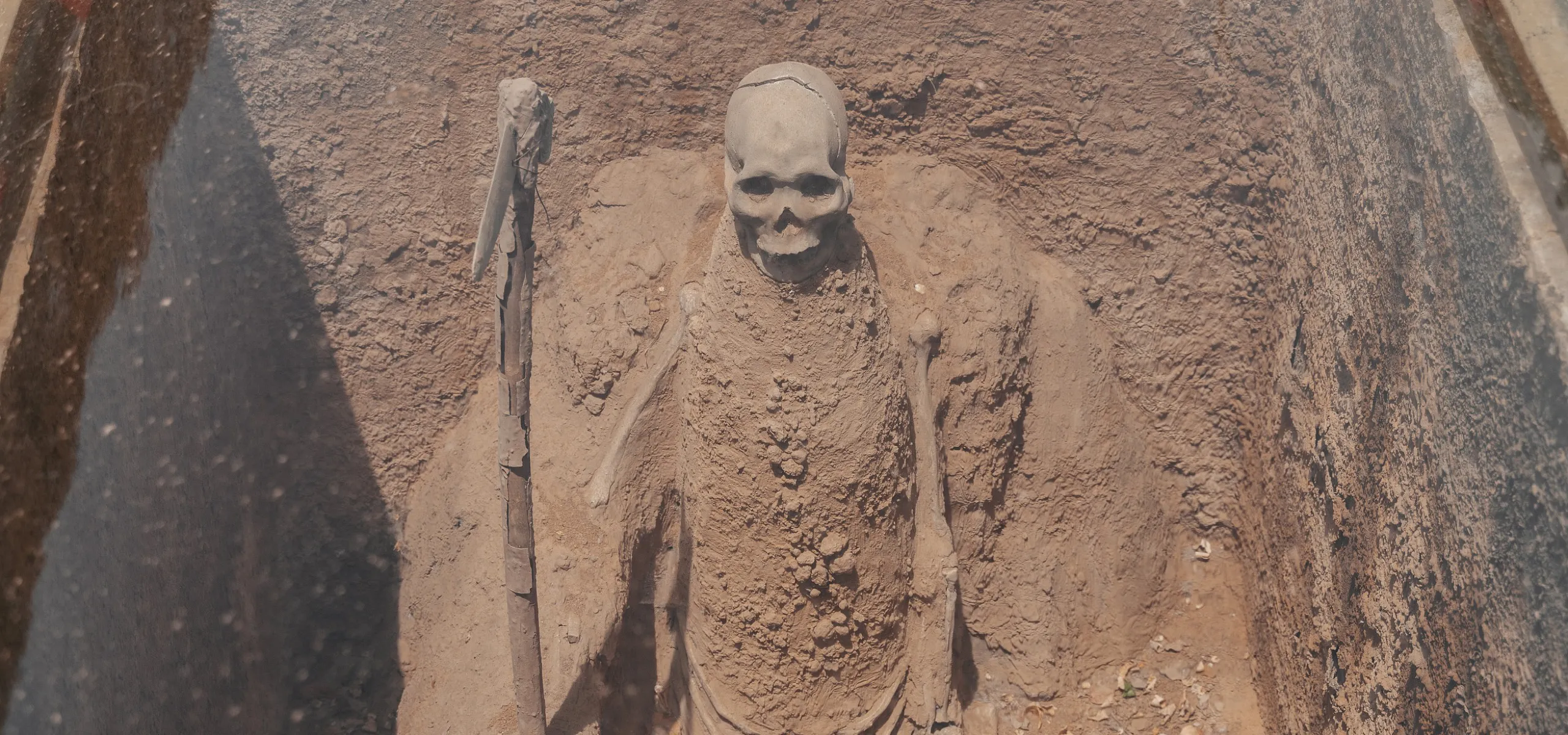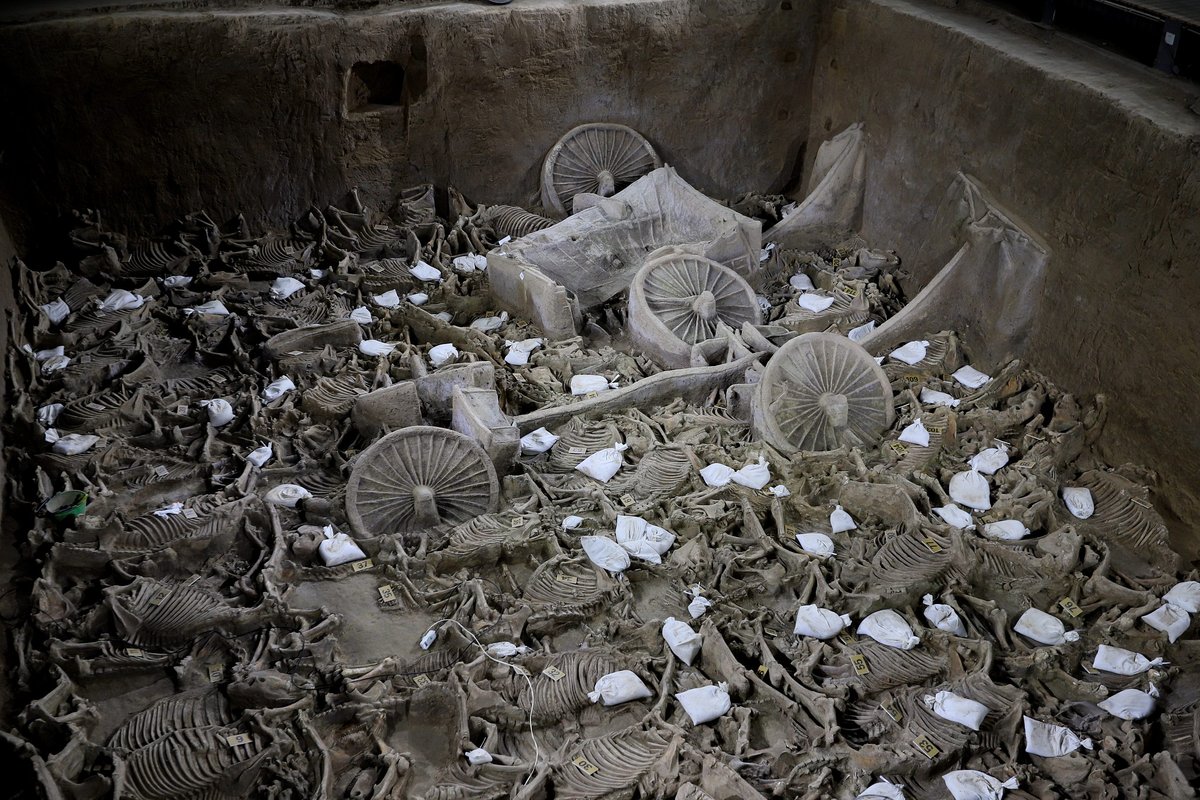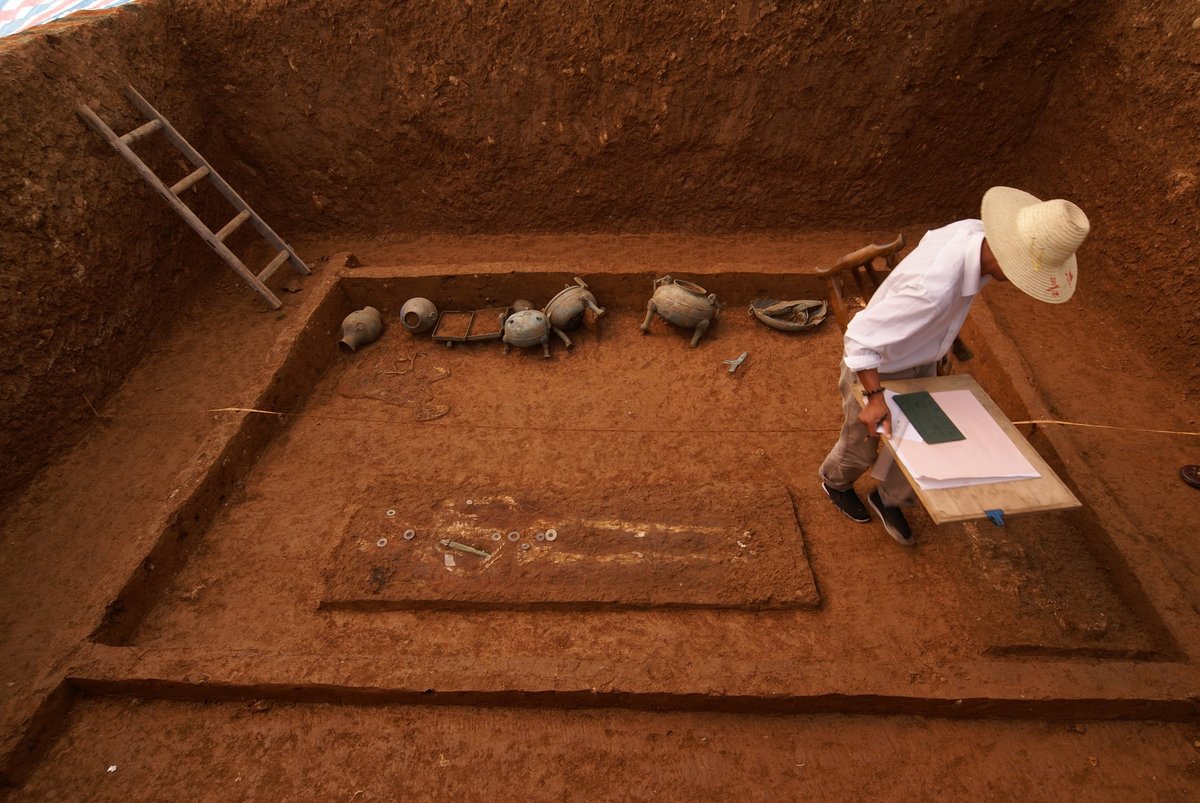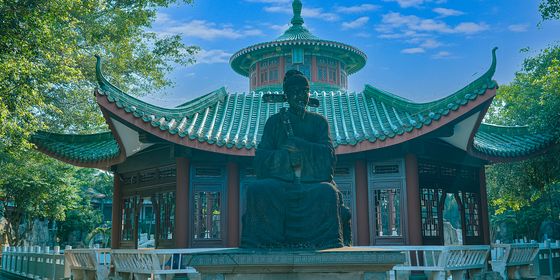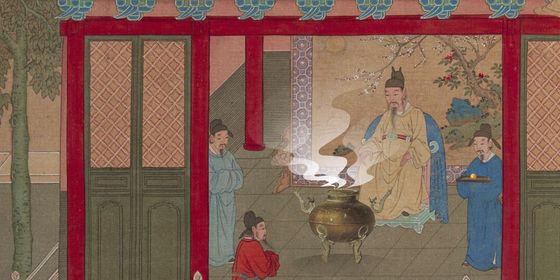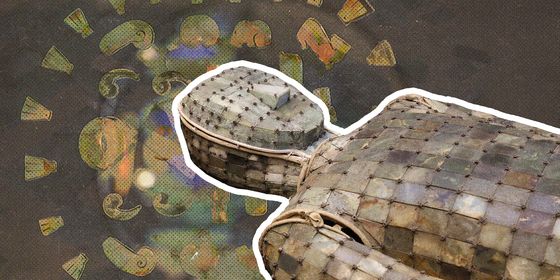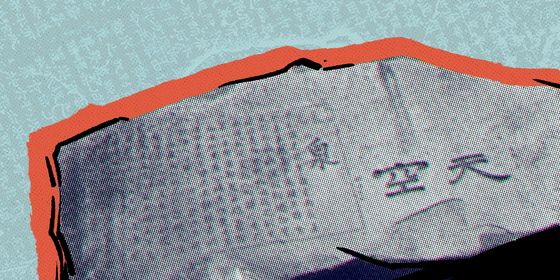For centuries, Chinese funerals demanded living sacrifices to accompany the dead in the afterlife
In the burial pits of Qin Shi Huang (秦始皇), first emperor of imperial China and founder of the Qin dynasty (221 – 206 BCE), in Shaanxi province, next to the nearly 9,000 famous figurines of the terracotta army, archaeologists found something else too: the human remains of thousands buried, likely alive, together with the deceased emperor.
These poor souls died as part of an infamous institution of burying the living along with the dead so they could take care of them in the afterlife, known as xunzang (殉葬 xùnzàng, sacrificial burial) or renxun (人殉 rénxùn, human sacrifice). The practice can be found in most dynasties of imperial China, even up to the most recent, the Qing (1616 – 1911), despite repeated attempts to ban it. Throughout these millennia, it led to thousands of deaths, forced or otherwise.
According to the Records of the Grand Historian (《史记》), a history of ancient China by Han dynasty (206 BCE – 220 CE) scholar Sima Qian (司马迁), after Qin Shi Huang died, his son and successor Huhai (胡亥) ordered his soldiers to “execute and bury all [his father’s] concubines who had never given birth,” because “it was inappropriate to let them leave the palace.” Sima didn’t explain exactly how many people died at this order, but recorded that “it was a large number.” At present, of the 99 small tombs archaeologists have discovered inside the mausoleum, 10 have been excavated, and all of them contain the bones of numerous young women.
Thousands of construction workers who built the magnificent mausoleum to the famously tyrannical ruler also became victims. Sima recorded that after Qin Shi Huang’s burial was complete, someone pointed out that the construction workers might reveal what they knew of the inner workings of the mausoleum, which contained vast treasures and was booby-trapped to the teeth to protect it from grave robbers.
Huhai’s solution was to close the gates of the mausoleum after the funeral ended, trapping all the workers inside. Historical records show that about 720,000 people worked on the mausoleum. Even if not all of them were killed, it’s reasonable to believe the death toll was terribly high.
Qin Shi Huang was not the first ruler, nor the last, to have a funeral complete with xunzang. The practice is most famously associated with the Shang dynasty (1600 – 1046 BCE). At the Mausoleum of Late Shang Kings at Houjiazhuang in Yinxu (in present-day Henan province), believed to be the last capital of the Shang dynasty, researchers found 164 skeletons in the burial pits, probably killed to keep the dead kings company in the afterlife.
But while the practice continued for centuries, dissenting voices questioned the morality of the practice as early as the the Spring and Autumn (770 – 476 BCE) and Warring States (475 – 221 BCE) periods. Mozi (墨子), founder of the philosophical school of Mohism, wrote in his self-titled work Mozi that, “For xunzhang, the kings kill dozens to hundreds; the military generals and civil officials kill from a few to one hundred...such a practice is hindering people’s life, and wasting countless fortunes.” Xunzi (荀子), a Confucian philosopher of the same era, wrote in his book Xunzi that “cutting down on the amount spent on the dead is a Mohist idea…while killing the living to accompany the dead is a cruel idea!”
But this didn’t stop Duke Mu of the State of Qin (秦穆公), one of the “Five Hegemons” of the Spring and Autumn period, from having 177 people killed at his funeral, including three faithful officials named Yanxi (奄息), Zhonghang (仲行), and Zhenhu (针虎). As Ying Shao (应劭), a scholar of the Eastern Han dynasty (25 – 220), recorded in his Annotated Book of Han (《汉书》注): “[The duke] said at a banquet with his officials, ‘Since we shared happy times together when we are alive, we should die together and share the grief.’ The three officials, all drunk, promised to die along with the duke.”
Other humans couldn’t even give drunken consent to their sacrifice. According to the Spring and Autumn Annals of Wu and Yue (《吴越春秋》), a historical record from the Eastern Han dynasty, Helü (阖闾), the king of the State of Wu from 514 to 496 BCE, forced thousands of ordinary people into xunzang for his daughter, Princess Tengyu (滕玉公主), who had committed suicide. On the day of the funeral, Helü ordered his subordinates to walk dozens of white cranes down the road to the luxurious mausoleum he had built for his daughter. The strange scene attracted thousands of onlookers, who followed the procession. As they arrived, Helü ordered his soldiers to drive all the people and the cranes into the mausoleum, and shut the gates permanently.
Read more:
- Why Did a 3,000-Year-Old Dynasty Practice Ritual Killing?
- Disturbing Methods in Ancient Chinese Torture
- Curious Court Etiquette From Ancient China
Several emperors of the Han dynasty, perhaps seeing how the Qin’s tyrannical rule eventually led to their overthrow, tried to abolish xunzang. Emperor Wu (汉武帝), for example, accepted a memo from scholar Dong Zhongshu (董仲舒) which proposed several policies including “stop casually killing slaves and maids.” Later, according to the Book of Han (《汉书》), when a feudal prince named Liu Yuan (刘元) asked the Emperor Xuan (汉宣帝) in the first century BCE for permission to kill a maidservant as a burial sacrifice, the emperor rejected Liu’s request and stripped him of his noble title.
In the Tang (618 – 907) and Song (960 – 1279) dynasties, considered two of China’s most prosperous and “civilized” periods by later historians, the xunzang custom seemed to disappear—at least, no records of xunzang cases are found in official historical texts. However, the practice was still recorded in the Liao (907 – 1125), Jin (1115 – 1234), and Yuan (1206 – 1368) dynasties, all founded by nomadic conquerors from the north.
According to the History of Liao (《辽史》), an official historical record compiled by later court historians, when Yelü Abaoji (耶律阿保机), the founding emperor of the Liao dynasty (also known as the Khitan Empire), died, his empress Shulü Ping (述律平) volunteered to be killed with him. But the empress was an important figure responsible for many state affairs at the time, so officials convinced her to stay alive. Instead, the empress chopped off her own right hand and buried it with her husband, and also killed over a hundred officials for good measure.
Likewise, according to Sanchao Beimeng Huibian (《三朝北盟会编》), or ”Collected Records of the Northern Alliance During Reigns of Three Emperors,” a historical text compiled by the Song dynasty historian Xu Mengshen (徐梦莘), in the Jurchen-led Jin dynasty, when a Jurchen aristocrat died, his slaves and horse would be burned alive and buried with him.
During the Mongol-led Yuan dynasty, the Venetian traveler Marco Polo claimed that anyone who laid eyes on the funeral procession of Genghis Khan (成吉思汗), the founder of the Mongol empire, was killed. The Yuan, ruled by Genghis Khan’s descendants, apparently encouraged xunzang among the general populace as an act of loyalty and respect. The History of Yuan (《元史》), official historical records of the Yuan dynasty commissioned by the court of the Ming dynasty (1368 – 1644), recorded that after a wife in Hezhong county of Daning province (today’s Liaoning province) offered to sacrifice herself for her dead husband, the whole family received commendations from the government.
Things didn’t improve in the Han-ruled Ming dynasty, at least not at first. Historical records show that around 100 imperial concubines were killed as xunzang for five early Ming emperors. But a more humane change came from an unlikely source during the reign of the Emperor Yingzong (明英宗), the infamously incompetent sixth Ming emperor known for being imprisoned by the rival Mongols and killing the upright official Yu Qian (于谦). This unfit emperor, however, redeemed himself somewhat just before he died in 1464 with his last order: abolishing the practice of burying imperial concubines and palace maids.
Though Manchu nobles also practiced xunzang in the early years of the following Qing dynasty, the Kangxi Emperor (康熙皇帝) expressly prohibited the act in 1673. The emperor’s ministers advised him that the traditional Manchu custom was cruel and unjust. Since then, the brutal convention disappeared from historical records—though there are always more historical burial pits to be unearthed.





